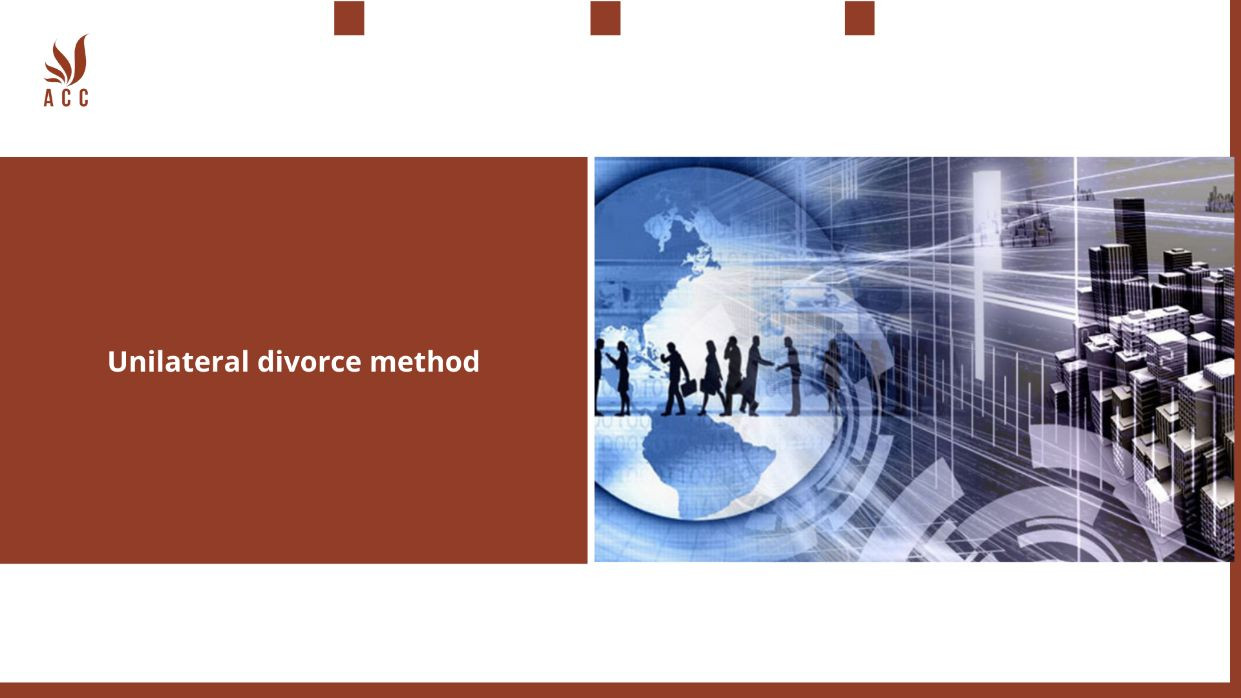
1. Unilateral divorce method
A happy family life is what everyone wants. However, when spouses are no longer able to raise a family together, one spouse may want a divorce. This case is considered a unilateral divorce, this article will help readers have an overview of the proceedings.
2. Conditions required in case of unilateral divorce:
In a unilateral divorce case, there are 3 requests that the plaintiff can ask the court to resolve:
First, ask the court to approve the divorce;
Second, requirements related to common children and alimony; And
Third, request division of common property during the marriage period. Readers, in addition to the first request related to personal issues, can ask the court to resolve both property issues and general issues of children. If it turns out that the spouses cannot voluntarily agree on these issues.
3. Documents and procedures for unilateral divorce settlement:
To request the Court to accept unilateral divorce settlement, the requester must prepare the following documents:
Marriage registration;
ID card/CCCD and household registration of both husband and wife;
Birth certificate, copy of child (if any);
Documents on ownership of house, land and other assets (if any);
Debt notice (if any); And
Other relevant documents proving the personal and property relationships of the couple.
4. Management agent:
District People's Court where the defendant actually resides.
5. Resolution results:
The Court's judgment or decision recognizes the consent of the litigants.
6. Court process for accepting and resolving unilateral divorce cases:
*Step 1: Review the file and accept the case: When the applicant submits a divorce application to court, the court will check the file and review the file, then wait about 10 to 15 days to receive the result. fruit. If the case is correct, the court will issue a notice to advance court fees. The plaintiff brings this notice to the enforcement agency of the district court in the same district as the court to pay the court fee and return the receipt to the court.
* Step 2: The Court accepts the case and appoints the responsible Judge: Within 03 working days from the date of accepting the case, the Chief Judge will issue a decision to appoint a Judge to directly handle the case.
Within 03 working days from the date of appointment, the Judge must send a written notice to the plaintiff, defendant, agencies, organizations, and people with rights and obligations related to the resolution of the case. to the Procuracy at the same level on decisions of agencies, organizations and individuals with rights and obligations related to the resolution of the case. Court. file acceptance.
* Step 3: Conciliation: During the 4-month trial preparation period, the Court will summon the couple for testimony and reconciliation. If the two parties reach a divorce agreement, the court will issue a minutes of successful conciliation and after 7 days from the date of successful conciliation, the court will issue a decision recognizing the parties' agreement. This decision takes effect from the date of issuance and is enforceable without appeal or protest.
* Step 4: Trial and judgment: If mediation fails, the court will decide to bring the case to court. During the trial, the court based on the wishes of both parties and evaluated the evidence in the case to make a decision, and finally issued a judgment recognizing the divorce.
The Court's judgment will take effect 1 month after the date of trial or from the effective date of service to the relevant parties. The court can also reject the divorce petition if the conflict is not serious enough. When the court rejects a divorce petition, it must be one year from the date the person requesting the divorce has the right to sue for divorce.
Q&A
Question 1: What is a unilateral divorce method?
Question 2: How does a unilateral divorce differ from a mutual consent divorce?
Question 3: What are the legal grounds for a unilateral divorce?
Question 4: What is the process for obtaining a unilateral divorce?
Nội dung bài viết:






Bình luận